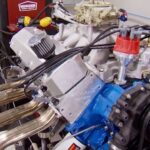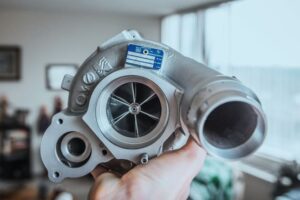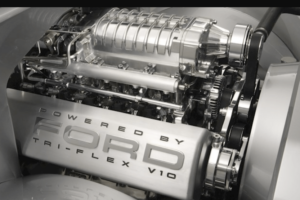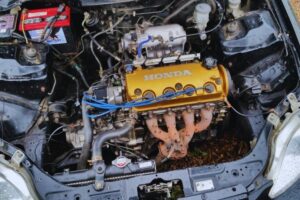Honda Motor Co manufactured its D16-Series engines from 1986 to 2007. These engines provided power to the most popular Honda vehicles in the whole decade of the 1990s. Why was it a very popular Honda engine? I’ll discuss the Honda D16Y8 Engine specs and reviews in this article.
The Honda D16Y8 engine can deliver 127 hp at 6,600 rpm. It has a torque of 107 lbs.-ft. at 5,500 rpm, and a bore and stroke that measures 2.95 x 3.53 inches. It has a 1.6-liter, four-cylinder VTEC engine with Single Overhead Cam (SOHC).
The Honda D16Y8 engine is one of the D16 engine series of the company. It is a good engine and was one of the most in-demand engines of Honda. This engine also packs lots of power with its VTEC SOHC, which has a compression ratio of 9:6:1. Its VTEC technology kicks in at 5,600 rpm.
Read on and learn more about the Honda D16Y8 engine, its key specs, and some reviews regarding its performance and capabilities.
Honda D16Y8 Engine Specs and Review
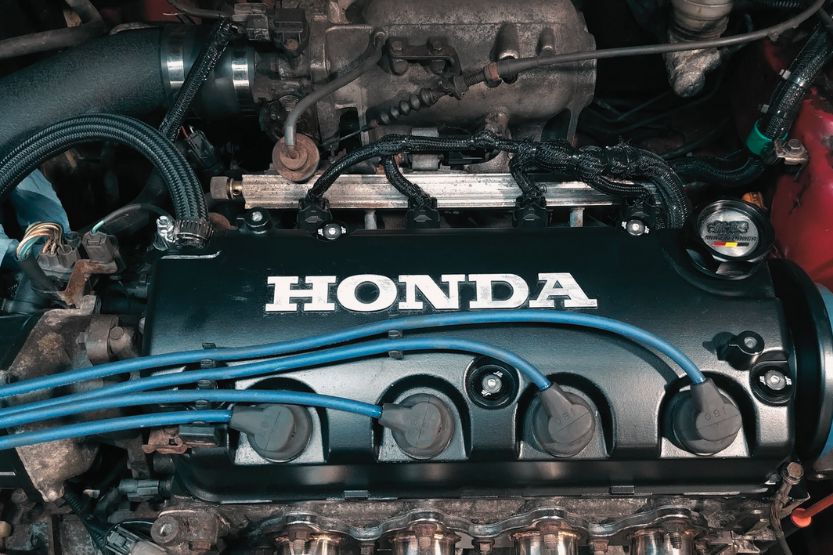
The Honda D16Y8 engine belongs to the D16 engine series of Honda Motor Co, which it manufactured from 1986 to 2007. Its key specs include a horsepower of 127 hp. at 6,600 rpm, and torque of 107-pound-foot at 5,500 rpm.
The size of this engine is 1.6 liters, with four cylinders, a Single Overhead Cam (SOHC), and a VTEC that kicks in at 5,600 rpm. It has a compression ratio of 9:6:1 and a bore and stroke measuring 2.95 x 3.54 inches.
This engine is one of the most in-demand engines of Honda’s D16 series. Honda fitted this engine in its Honda Civic EX models from 1996 to 2000. They also put this engine in the Honda Del Sol up until 1997.
As for its reliability, it is one of Honda’s most dependable engines. While Honda no longer manufactures this engine, it is still appreciated and used by many car enthusiasts because of its design foundation and reliability as a daily driver.
This engine is also affordable, lightweight, and not hard to find – qualities that make it versatile and widely appreciated in the United States. However, Honda stopped producing only after four years of its production run because Honda replaced it with the Honda D17 series engines.
Honda D16Y8 Engine Specs
Honda’s motivation in designing the D16Y8 engine is to produce an economy engine series. So, the D16Y8 engine was made to be reliable but still available at an affordable price.
It can deliver an average amount of power but can reportedly boost overall performance and additional power if given the proper mods and tuning.
1. Key Specs
With that said, here are the key specs of the Honda D16Y8 engine:
- Years Manufactured – from 1996 to 2000
- Horsepower – 127 hp. (95 kW) at 6,600 RPM
- Torque – 107 lb.-ft. (145 Nm) at 5,500 RPM
- Displacement – 1,590 cc (97 cu in)
- Configuration – Inline 4-Cylinder
- Aspiration – Naturally Aspirated and Forced Induction
- Bore and Stroke – 2.95 x 3.54 in (75.0 × 90.0 mm)
- Compression – 9.6:1
- Redline – 6,800 rpm
- Rev Limit – 7,200 rpm
- Valvetrain – SOHC – Four Valves per Cylinder – VTEC and non-VTEC Variants
- Block/Head Material – Aluminum
- VTEC Switchover – 5,600 RPM
The D16Y8 engine also has a thinner head gasket and intake manifold with bigger and shorter runners. This design allowed the D16Y8 intake manifold of the engine to increase its flow and thus perform better.
The D16Y8 engine has a chamber design that is more angular and smaller. This design allowed it to burn fuel better. Its camshaft also has a longer duration of about one to two degrees. This engine has a firing order of 1-3-4-2. Most Honda engines follow this same D16Y8 firing order.
2. Performance
With just a 1.6 liter displacement, the D16Y8 engine packed tremendous power. It made the Civic EX at that time special because of its D16Y8 VTEC technology or Variable Valve Timing and Lift Electronic Control.
This technology allowed the D16Y8 engine to adjust its transmission system at low and high RPM speeds to deliver maximum performance. In its stock form, this engine produced 127 horsepower at 6,600 rpm.
When it comes to torque, the D16Y8 engine was capable of producing 107 pound-foot at 5,500 rpm. It will hit its Redline if you rev it at 6,800 rpm, and it has its red limit as soon as it hits 7,200 rpm.
While Honda says it was a 1.6-liter engine, its actual displacement was only 1,590 cubic centimeters or 97 cubic inches.
3. Block, Head, and Valvetrain
The D16Y8 engine is made of aluminum alloy blocks. Its cylinder head is also made of aluminum. The aluminum alloy makes the engine lighter than cast iron engine blocks by about one-half.
But cast iron engine blocks are stronger than aluminum alloy blocks. To compensate for these aluminum blocks, Honda used steel cylinder liners. These cylinder liners improved the overall strength of the engine and made it more durable even if engine modifications were done on it.
The D16Y8 engine has four valves per cylinder, a single overhead camshaft, two intakes, and two exhausts. So, for the valve train, the D16Y8 engine has 16 valves.
D16Y8 Engine Review
The D16Y8 engine was quite popular during its four years of production, with the Honda Civic EX and the Honda Del Sol carrying its banner.
Not Too Many Issues
There were not too many complaints and problems in its operation. Even today, it is still popular among those looking for upgrades for their previous models of D16 engines that don’t have VTEC transmissions.
While its production run was stopped in 2000 after just being in production for four years, it remains popular today among those who want to replace or upgrade their current engines. That’s why modders can buy plenty of aftermarket parts at very affordable prices.
Addition of Cold Air Intake
The usual upgrades modders do to extract more power from the D16Y8 engine are adding a cold air intake and a Honda D16Y8 turbo kit.
Many car enthusiasts have made many variations on this engine since its production heyday up to 2007. Regardless of the kind of mod and upgrade, every engine was still equipped with 16 valves and either a Double Overhead Cam (DOHC) or a Single Overhead Cam (SOHC).
How Did D16Y8 Engine Perform in Its Stock Form?
Here are some sample reviews about the quality and performance of the HondaD16Y8 Engine:
Overall Reliability
In developing and producing the D16Y8 Engine, Honda wanted to maintain its exceptional standard for dependability in all the variants of the D16 engine series. Many drivers of Honda cars with the D16Y8 engine as its motor expect this engine to reach high mileage.
However, if the engine reaches high mileage, it must be given the proper care and maintenance, including regular oil changes, services, and repairs. The D16Y8 engine, if given this kind of care and maintenance, reached a high mileage of about 200,000 miles.
The D16Y8 engine requires the owner to practice responsible ownership to reach this high mileage. This includes being careful in doing mods or upgrades on the engine. It is essential to use aftermarket parts that are of high quality and have a good reputation.
Faulty and low-quality components can impact the reliability and durability of the D16Y8 engine. Additionally, an owner should also be careful in adding a D16Y8 turbo to this engine because it can also adversely impact the longevity of this engine.
Availability and Affordability
The D16Y8 engine is affordable, many of which are sold in the market. They are two things that make this Honda attractive to modders and car enthusiasts: affordability and availability.
Aside from these two qualities, the possibility of boosting its performance with aftermarket upgrades adds to its saleability.
However, most of the performance upgrades that were done and are being done to this engine come at a steep price. Many bolt-on upgraders have found it hard to find the money required for such upgrades.
It is worth noting that even if Honda only produced it for four years, the D16Y8 engine still became a staple in Honda’s history. In the United States, it only came with a single cam.
However, in its mother country, Japan, it was made available as the ZC version, equipped with dual overhead cams. This is proof of the versatility of this engine.
Again, is the Honda D16Y8 a good engine? The Honda D16Y18 engine or D16Y6 in New Zealand is one of the most sought-after D16 engines. It is equipped with SOHC VTEC and can deliver 127 hp at 6,600 RPM and 107 lb/ft torque at 5,500 RPM. It also has a compression ratio of 9.6:1.
Most Common D16Y8 Engine Problems
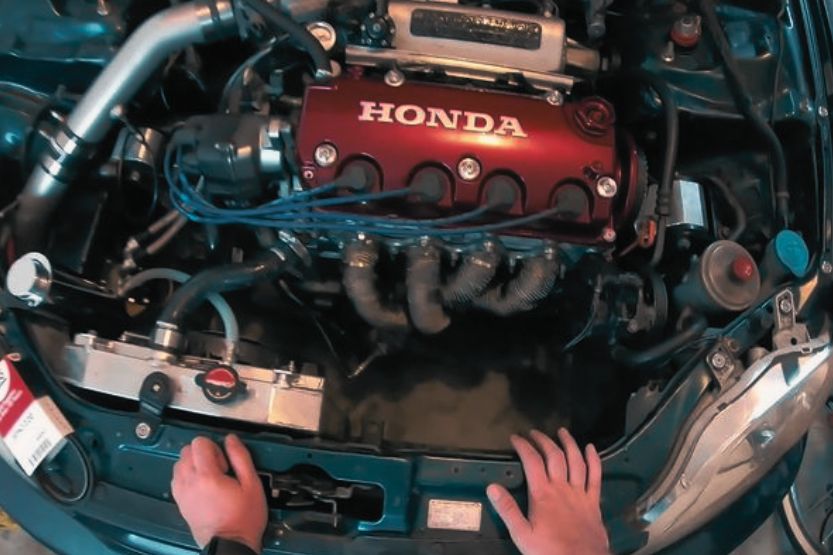
Like any other automotive engine, the D16Y8 engine also has its share of problems.
However, you should also remember that not all the issues I will enumerate here are prevalent in this engine. The problems that are consistently reported regarding this engine are the following:
1. Rough Idling
This is one of the most commonly reported problems of this engine. It is usually caused by an idle control valve or a dirty throttle body. Thankfully, this issue can be fixed easily by just doing a quick cleanup.
Another cause of this problem is malfunctioning or broken O2 sensors. Aside from rough idling, the engine will experience poor acceleration if this is the culprit. Additionally, the issue of rough idling can be harder to diagnose because of the wide variety of possible causes.
With that said, here are some of the other probable causes of rough idling of this engine:
- Bad ECT sensor
- Malfunctioning fuel pump
- TPS sensor problems
- Malfunctioning D16Y8 head gasket
- Dirty throttle valve
- Bad MAF sensor
Considering the different causes of rough idling, it is also possible that an underlying issue has precipitated this problem. So, it is best to diagnose the actual problem and then fix it once so the rough idling situation will not worsen.
2. Faulty Crankshaft Harmonic Balancer or Malfunctioning Crankshaft Sheaves
This is one of the most common issues reported regarding the D16Y8 engine. In general, replacing the sheaves or crankshaft of the engine usually resolves this issue. But this issue can also be caused by various reasons which can prematurely damage the crankshaft sheaves.
Some of these issues, which can also cause the crankshaft harmonic balancer to malfunction, are the following:
- Transmission damage
- Irregular idling of the engine
- Bad power steering pump
- Engine vibrations
- Bad alternator
If the crankshaft of a D16Y8 engine is not functioning correctly, sporadic engine problems will occur. So, even if this engine’s reliability and quality are established, still many drivers have reported issues that center on the components of its crankshaft.
It is, therefore, essential to pinpoint the real issues before they cause other more severe problems to the engine.
2. Faulty Exhaust Manifold
The exhaust manifold of the D16Y8 engine got the most reported issues. Many drivers have experienced exhaust manifolds of their D16Y8 engines prematurely wearing out compared to the durability of other engines in their size and class.
The symptoms of this problem include the following:
- Faulty oxygen sensor
- Overall reduction in engine power
- Excessive noise from the engine
Considering that an engine’s exhaust manifold is repeatedly subjected to heating and cooling, which can cause sporadic expansion, it will eventually weaken over time.
With long-term exposure to this kind of stress and changes in temperature, the exhaust manifold will eventually give up. It may develop small holes and can crack, eventually leading to its breakdown.
Honda Civics with D16Y8 Engines
It is also essential for you to know the Honda car models where the D16Y8 engines were installed. Honda used this engine to power five of its car models. These Honda cars include the following:
- 1996-2000 – Honda Civic EX (US, UK)
- 1996-2000 – Honda Civic Si (Canada)
- 1996-1997 – Honda Del Sol Si (US)
- 1996-1998 – Honda Civic Coupe (UK)
- 1997-2000 – Acura 1.6 EL (Canada)
Please note that the D16Y8 engine is just one of the variations of Honda’s D16 engine series. There are 29 other versions of this D16 engine series. This Honda engine series has been installed in various older Honda car models of the past.
This engine series gained popularity in the tuning market worldwide because of its higher displacement and easy availability in the global car market.
D16Y8 Engine Production History
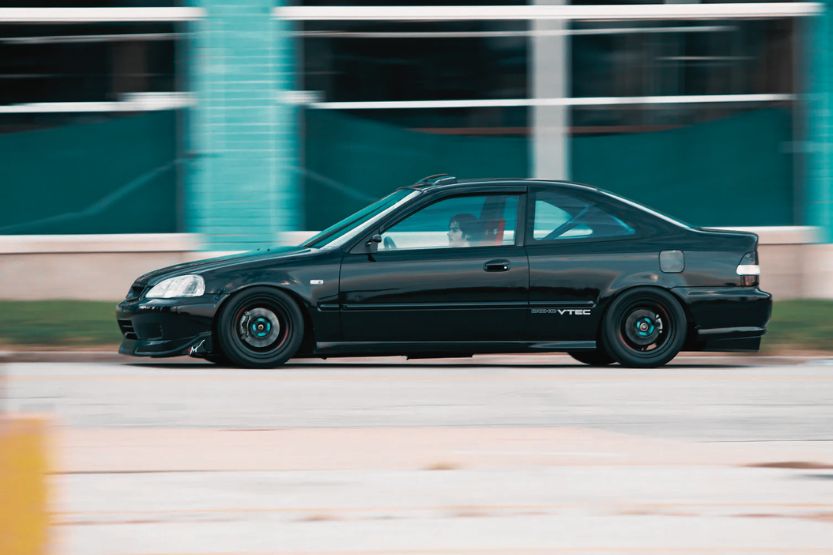
Honda fitted the D16Y8 engine in the Honda Civic EX models from 1996 to 2000. Aside from these models, Honda also fitted it in its Honda Del Sol models up to 1997. The D16Y8 engine was also used in the UK’s Honda Civic EX version and the Honda Coupe.
This engine also powered the Honda Civic Si in Canada from 1996 to 2000 and the Honda Acura 1.6 EL from 1997 to 2000. The D16Y8 Engine in the Honda Civic EX was considerably more powerful than the engine installed in its base model.
The Honda Civic EX base model can only produce 106 horsepower, while the Honda Civic EX with VTEC can crank 127 hp. While it enjoyed a short production run, this engine was and still is very popular because of its swap compatibility and lightweight design.
In the Honda Motor Co scheme of things, the D16Y8 engine was eventually preceded by the Honda D16Y9, a non-VTEC engine.
Frequently Asked Questions
If you want some more information about this engine, here are the answers to the most often asked question about it:
What Are the Key Specs of the Honda D16Y8 Engine?
The essential specs you need to know about this engine are its horsepower of 127, which can be attained if the engine reaches 6,600 rpm, and its torque of 107 lb.-ft when its rotating speed comes up to 5,500 rpm.
It is a 1.6-liter engine with a bore and stroke dimension of 2.95 x 3.52 inches. Its VTEC technology will kick in at 5,600 rpm.
Is the Honda D16Y8 Engine Reliable?
The Honda D16Y8 engine is reliable. It can last up to 200,000 miles or even more appropriately driven and regularly maintained without experiencing significant problems.
What Are Honda Car Models Fitted with This Engine?
Five Honda cars were fitted with the D16Y8 engine. They include the following models:
- Honda Civic EX (US, UK) from 1996-2000
- Honda Civic Si (Canada) from 1996-2000
- Honda Del Sol Si (US) from 1996-1997
- Honda Civic Coupe (UK) from 1996-1998
- Acura 1.6 EL (Canada) from 1997-2000
In Closing: Specs and Review of Honda D16Y8 Engine
The Honda D16Y8 engine can produce 127 horsepower at 6,600 rpm with a torque of 107 lbs.-ft. at 5,500 rpm. It has a bore and stroke of .95 x 3.53 inches. The size of this engine is 1.6 liters, with four cylinders and a Single Overhead Cam (SOHC).
This engine belongs to the D16 series engines of Honda Motor Co. It is a good and reliable engine that was most in demand during its production run in the 1990s.
It is still popular among car modders and upgraders. The Honda D16Y8 engine can deliver good power with its SOHC VTEC engine, which can kick in at 5,600 rpm.

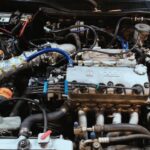
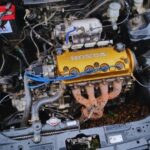
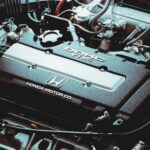
![Interference Engine List [and Non-Interference Engine List] interference engine list](https://roadsumo.com/wp-content/uploads/2021/06/interference-engine-list-150x150.jpg)
![Check Engine Light On and Off Intermittently [Causes and Fixes] check engine light on and off](https://roadsumo.com/wp-content/uploads/2021/06/check-engine-light-on-and-off-150x150.jpg)
